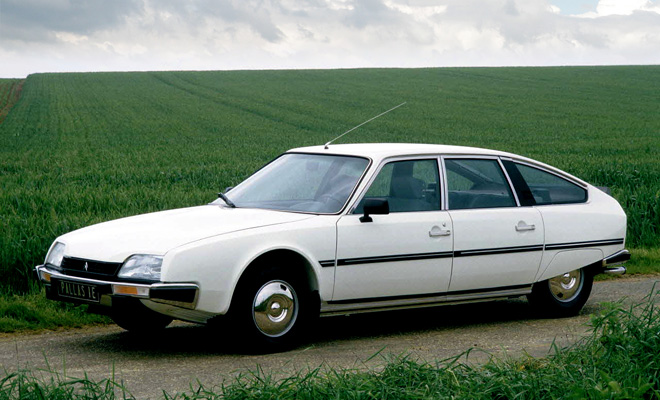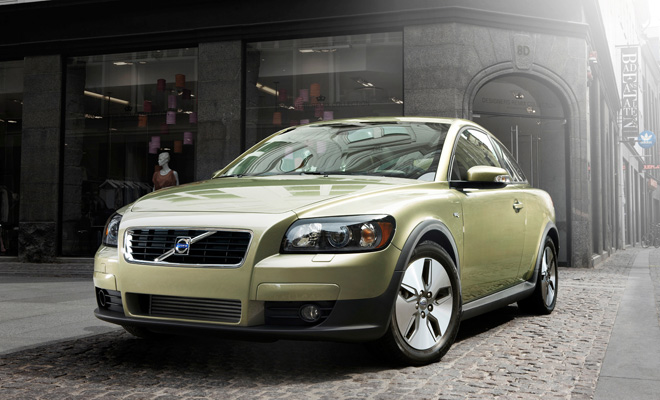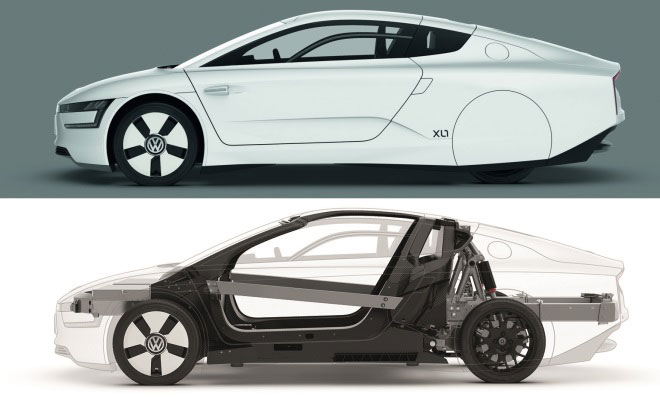by Lem Bingley 
At the Frankfurt Motor Show this month, BMW revealed the final production form of its i8 plug-in hybrid sports car. It seems fair to say that it looks sensational, and should also be amazingly fuel efficient, partly due to its arresting, slippery shape. With a drag factor of only 0.26, the i8 sits firmly among the most wind-cheating cars ever to go into production.
The i8’s striking wheels play a part in the overall result, being unusually narrow for a high-performance car. The front tyres are 195mm wide and 50% profile, while the rears are 215/45 – the kind of measurements that wouldn’t seem out of place on a modest, mid-sized hatchback. The difference is that the sleek BMW uses big, 20-inch rims, elongating each tyre’s contact patch and so providing sufficient grip for sports-car handling.
The BMW’s standard alloy wheels also look especially aerodynamic, with broad curved spokes like a set of polished axe blades. Optional upgrades include carbon-fibre wheels to help trim weight.
I wonder whether the arrival of eye-catching cars like the i8 might trigger a surge of interest in wheel aerodynamics. At present, specialist alloy wheel providers like Autopart UK offer a huge range of sizes and styles, but provide precious little insight into whether a new set of rims might help or hinder a car’s ability to cut through the air.
Perhaps that’s because the answer would always be, “it depends”. Research has shown that wheels have a big impact on how cleanly a car can slip through the air, accounting for as much as a quarter of aerodynamic drag, but they do so largely by affecting how air greets the other components of the body. Like four whirling fans, wheels can influence how air flows under the car, along the flanks and how much energy-sapping turbulence is left in the car’s wake.
But to my eye, efficient wheels also have a visual appeal – so it will be interesting to see if they start coming into fashion. Here are my favourite wind-cheating wheels, based on looks alone.
 Citroen CX
Citroen CX
French manufacturer Citroen was always ahead of the game in aerodynamics, with its pioneering DS model cutting a dash in 1955 when most rivals were as wind-cheating as a wardrobe. 1974’s CX followed suit, with lots of wind tunnel work helping to achieve a drag factor of 0.36. Covers over the rear wheels helped to manage airflow at the back, while some of the earliest CX editions featured wonderfully clean chrome wheel covers. Air slots were noticeably absent (the one cutout is for access to the tyre’s valve) but Citroen created ducts under the car to channel sufficient airflow over the brake discs to keep them safely cooled.
 Ford Sierra
Ford Sierra
The 1982 replacement for the coke-bottle Cortina came in the dubious shape of Ford’s jelly-mould Sierra. Too unsettling to sell well initially, its smooth style eventually caught on and set the template for a million repmobiles. I remember seeing the first examples as a teenager and thinking they looked like freshly landed UFOs next to the chrome-bumpered dinosaurs of the time. I always admired the stark simplicity of the flush plastic wheel covers, a first for a European car. Flat wheel trims also caught on and became the norm, though rarely with as little ornamentation as those on the first of the breed.
 Saab 900 Aero
Saab 900 Aero
Aircraft maker Saab presumably knew a thing or two about aerodynamics, and with a drag coefficient of 0.34 its long-lived 900 model was more slippery than it looked, aided by that signature curved windscreen. But it’s the Aero editions that really look the part, with 1980s plastic cladding and flat, three-spoke alloy wheels creating an exceptionally clean impression. While lots of 1980s body kits were just for show, Saab’s were functional, helping to smooth airflow over the wheels and cleaning up wake turbulence under the rear bumper. Early Aero wheels were almost childishly geometric, while the later ones in this image came in left and right-hand versions and so had to be mounted the right way round.
 Honda Insight
Honda Insight
The 1999 first-generation Honda Insight is remarkable from every angle, but it also sports a fetching set of alloys. With a flush polished face and minimal cooling slots, the rims perfectly suit the Honda’s clean, futuristic aesthetic. Or at least the front pair does, as you can barely see the rear wheels behind the wind-cheating spats that lend the Insight an other-worldly (or indeed a Citroenesque) appearance. Similar flat-faced alloys appeared on early versions of the Honda Civic Hybrid that followed the Insight, though sadly later Civics and the second-generation Insight adopted more conventional alloy wheels with unremarkable spokes.
 Volvo DRIVe
Volvo DRIVe
Volvo was a latecomer to the special eco-label trend of a few years ago, waiting until 2010 to launch its “DRIVe” green car brand – supposed to be pronounced “drive-ee” but more often met with blank stares of incomprehension. Iffy marketing aside, Volvo’s efforts to cut CO2 included some truly remarkable wheels for its C30, S40 and V50 models. Looking like the fearsome blades of some giant industrial bacon slicer, the DRIVe wheels certainly made the cars stand out. Sadly the alloy surface stood out a bit too much too – it’s rare to see these in the wild without a full set of kerb scrapes. But on pristine looks alone, these are the business.
 VW XL1
VW XL1
Like the BMW i8, Volkswagen’s XL1 is a modern, state of the art product and that includes its wheels. They are forged from incredibly light but super strong magnesium and carry tyres of a width and profile only usually seen on space saver spares – 115/80 at the front (and a less extreme 145/55 at the rear). The cooling slots at the edges of the front wheel are small oblongs, creating an unbroken flat face to the wheel, while the suggestion of bigger gaps between the spokes is achieved with a judicious application of simple black paint. Together with the rear wheel fairings, the slim rims and tyres contribute to a barely-there drag factor of 0.189. The rear wheels are a modest 16 inches in diameter, while the more visible front rims are even smaller at only 15 inches across. They look dramatically bigger only because the XL1 itself is so delicate and tiny everywhere else.
From Citroen CX to BMW i8: a brief history of sleek eco wheels
26 September 2013
Read more about: BMW BMWi Citroen Ford fuel economy Honda Saab Volkswagen Volvo



